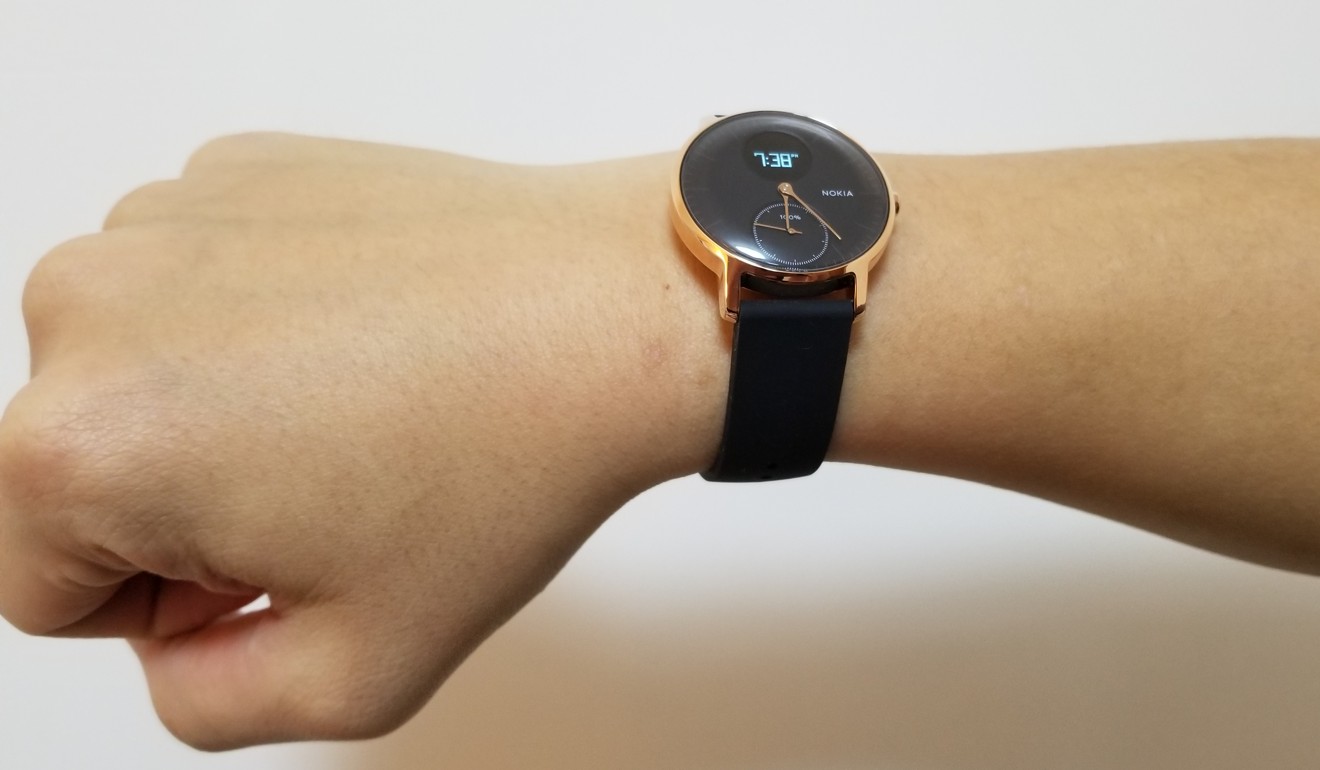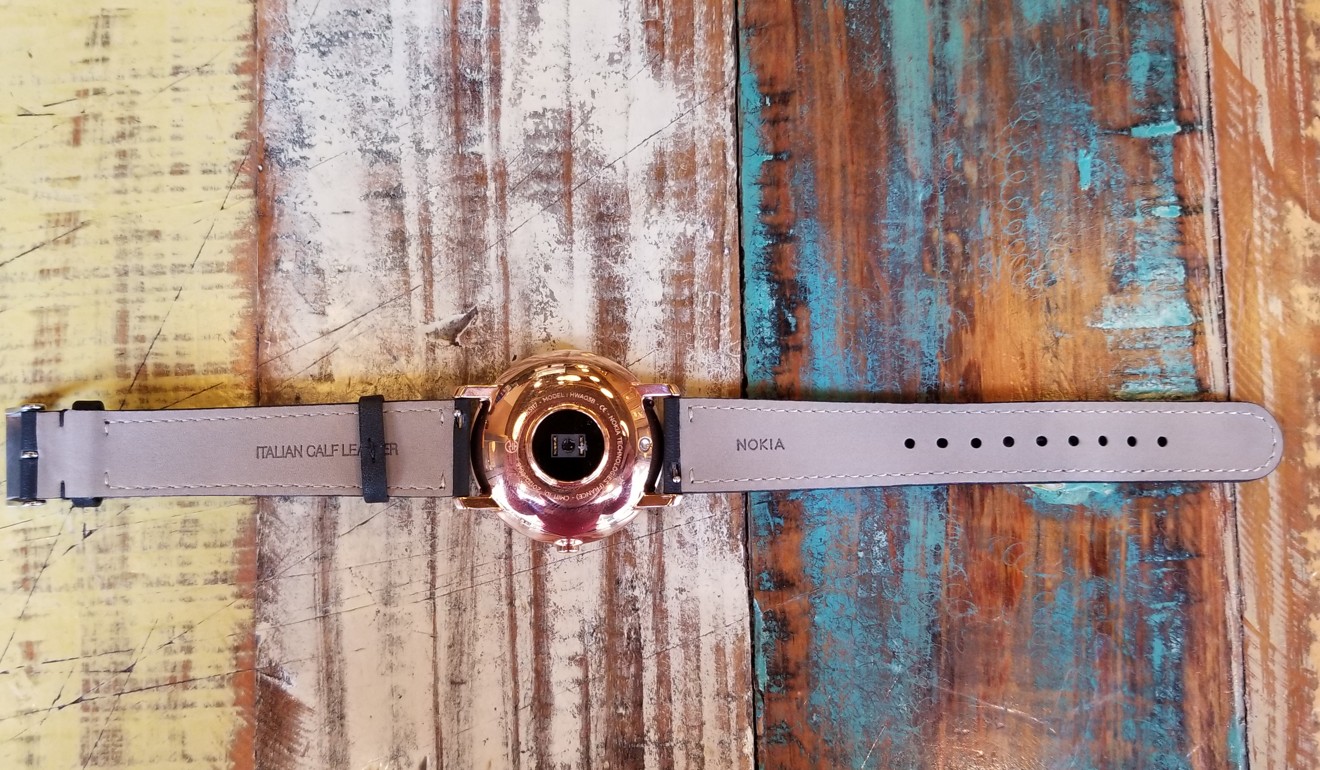
Review | Nokia Steel HR review: fitness tracker that looks like wristwatch your parents would have worn
Old-school watch look makes Nokia tracker stand out from the pack; it’s as accurate as market leader Fitbit’s devices when it comes to fitness data, but falls down on sleep tracking and notifications. Battery life is great
Though you can wear them on your wrist and they are capable of keeping time, most fitness trackers on the market, such as the Fitbit Alta and Samsung Gear Fit, look nothing like watches.
Even some smartwatches – like Apple’s square-ish all-screen “Watch” – don’t look like traditional timepieces. Instead, manufacturers seem keen on making these devices look as much like a mini computer as possible.
Three wildly wonderful watches – check out the bad boys of the watch world
The Nokia Steel HR does the opposite. It is a fitness tracker that doesn’t shove exercise numbers in your face. Instead, it actually looks like an old-school wristwatch that our parents used to wear.

Design and hardware
This Steel HR comes in two sizes – 36mm or 40mm – and has the classic timepiece aesthetic of circular stainless steel casing with a crown. In this case the crown isn’t a rotating switch but a button that turns on a tiny monochrome display in the shape of a sub-dial on the watch’s face. This is where you’ll see your fitness stats.
There is a second analogue sub-dial that has a rotating hand tracking progress towards your fitness goals. The watch uses mechanical watch hands with no numbers on the dials. This may sound absurd to people above a certain age, but plenty of young people (who’ve only used digital clocks their whole lives) will have trouble telling the time here.

On the back of the device is a heart rate sensor, which doesn’t protrude as much as the sensor on Fitbit’s tracker, the Charge 2.
The Steel HR comes with two straps: rubbery silicone and genuine calf leather. The former looks a bit tacky and is quick to attract dust, but is more suitable for exercise than the latter.
Overall, the Steel HR is thinner and lighter than most fitness trackers on the market, and comes closest to looking like a normal watch.

Software and features
In terms of fitness tracking the Steel HR covers all the bases. The display shows the standard fitness stats: step count, heart rate, calories burned, and a few others, while the watch will automatically track runs or swims – it is waterproof up to 50 metres.
For step counts and heart rate, both the Steel HR and Ionic gave similar numbers. Where Nokia’s watch stumbles is in sleep tracking.
Apple Watch 3 hits Hong Kong: 8 things to know about LTE edition
While the Steel HR (with the help of its companion app) offers the same in-depth sleep analysis as Fitbit, I found that on two out of four nights it incorrectly logged when I fell asleep. Fitbit’s software is very good at knowing the difference between lying in bed with your eyes open or actually being asleep; Nokia’s software (which the Finnish company inherited after acquiring French company Withings) is not as sophisticated.
Another letdown is that, while the Steel HR is capable of showing notifications, they are limited to alerts for incoming calls and calendar events, and SMS text messaging, which almost nobody but Americans use any more because of the ubiquity elsewhere of WhatsApp and WeChat. My Fitbit Ionic, meanwhile, can push Gmail and WhatsApp notifications to my wrist.

Performance and battery life
Battery life is great for a device of this kind. I’ve been using the watch for nearly four full days and there’s still 18 per cent battery life left. Five days seems definitely doable. Charging requires a proprietary plug, which is a bit annoying. It would be great in the future if smartwatches just use USB-C, which is a socket the entire tech industry is trending towards.
Otherwise, there’s not much to say about performance other than that everything works.
New at CES 2018: wearable tech to boost your health and wellness
Conclusion
If you want a fitness tracker without sacrificing the classic watch aesthetic, then the Nokia Steel HR is worth a look. If not, there are other options out there from Fitbit, Samsung, Apple that do much more – albeit at a higher price.
Price: US$240 (36mm only) for the special “Rose Gold” edition; US$215 (36mm) and US$240 (40mm) for the standard silver edition.

